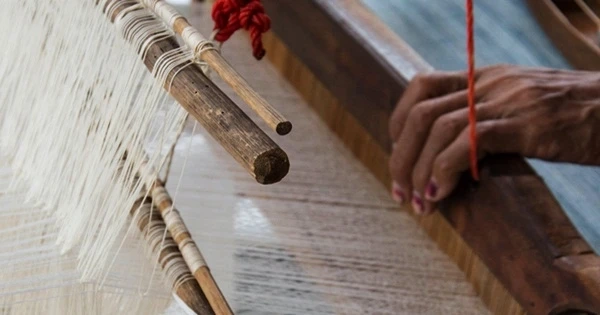Introduction:
In the vibrant tapestry of Indian textiles, few fabrics bear the weight of history and embody the spirit of independence like khadi. Khadi, a hand-spun and hand-woven fabric, holds a cherished place in India's cultural heritage. This blog takes you on a captivating journey through the history of khadi fabric, tracing its origins, its pivotal role in India's freedom struggle, and its continued significance in the modern era.
Origins of Khadi Fabric:
The roots of khadi can be traced back to ancient India, where spinning and weaving cotton were practiced for centuries. Khadi, derived from the Sanskrit word "khaddar," signifies handspun fabric. Its creation involved a meticulous process where cotton fibers were spun into yarn using a charkha (spinning wheel) and then woven into fabric on a handloom. This labor-intensive technique resulted in a fabric that was not only durable but also held cultural significance.
Khadi and the Freedom Movement:
The true prominence of khadi came to light during India's struggle for independence in the early 20th century. Its transformation into a symbol of resistance and self-reliance can be attributed to the visionary leadership of Mahatma Gandhi. Gandhi saw khadi as a means to empower Indians economically and politically, while also promoting self-sufficiency and eradicating poverty.
Gandhi believed that khadi could unite people across social and economic divides, and he himself became a living embodiment of its principles. He not only encouraged the production and use of khadi but also made it a prominent feature of his own attire. By wearing khadi, Gandhi conveyed a powerful message of simplicity, self-restraint, and solidarity with the masses.
The Swadeshi Movement, initiated by Gandhi, played a crucial role in popularizing khadi. The movement aimed to boycott British goods and promote Indian industries. Khadi became a symbol of defiance against the oppressive British rule and an assertion of India's self-determination. The spinning wheel and the khadi fabric became potent symbols of India's struggle for freedom.
Khadi's Legacy and Modern Relevance:
Following India's independence in 1947, the significance of khadi did not diminish. The Indian government recognized its cultural, economic, and social value and established the Khadi and Village Industries Commission (KVIC) to promote and regulate khadi production. Today, khadi continues to thrive as a sustainable, eco-friendly fabric that supports rural artisans and preserves traditional craftsmanship.
Khadi has also found its place in contemporary fashion, with designers incorporating it into their collections. Its versatility and timeless appeal have made it popular both in India and internationally. By choosing khadi, individuals contribute to the preservation of Indian heritage, support local artisans, and embrace sustainable fashion.
Conclusion:
The history of khadi fabric is interwoven with the story of India's struggle for independence. From its humble origins to its role as a powerful symbol of defiance and self-reliance, khadi remains an integral part of India's cultural identity. Its enduring legacy serves as a reminder of the resilience and indomitable spirit of the Indian people. As we celebrate the history of khadi, let us continue to cherish and promote this fabric that encapsulates the essence of India's freedom struggle and cultural heritage.


